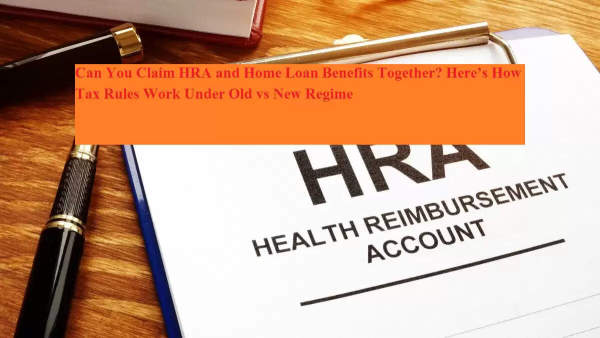
When it comes to salary structure, one of the most significant components for salaried employees is the House Rent Allowance (HRA). Not only does HRA help cover housing costs, but it also plays a vital role in reducing your taxable income—but only under the old income tax regime.
As more taxpayers navigate between the old and new tax regimes while filing their ITR, questions arise:
Can you claim both HRA and home loan deductions together?
Is HRA tax-exempt under the new regime?
What documents do you need to claim HRA?
Let’s break it down.
No, HRA is not eligible for tax exemption under the new tax regime. In fact, several commonly claimed deductions and exemptions are not available under the new system. Here are a few major benefits that are excluded:
Leave Travel Allowance (LTA)
Special allowances (children’s education, hostel expenses, uniform, etc.)
Home loan interest deduction (Section 24b)
Tax benefit on family pension
Most deductions under Sections 80C, 80D (except 80CCD(2), which is still allowed)
Yes, but only under the old tax regime. Taxpayers can claim tax exemption on both HRA and the interest and principal repayment of a home loan, provided they meet certain conditions.
This situation typically arises when:
You are paying rent in one city due to employment
And simultaneously servicing a home loan on a house located in another city or area
In some cases, family members might be living in your own home while you reside in a rented place close to your workplace. Alternatively, if you have rented out your owned property and are yourself living in a rented accommodation, you can still claim both benefits, but you must disclose the rental income in your income tax return.
Under the old tax regime, HRA exemption is computed using the least of the following three amounts:
Actual HRA received from the employer
50% of basic salary if residing in a metro city (or 40% for non-metros)
Rent paid minus 10% of basic salary
Here, "salary" refers to basic salary. If you're receiving Dearness Allowance (DA) and it's part of retirement benefits, it must be included in the calculation.
To claim HRA exemption during tax filing, you need to keep the following documents ready:
Rent agreement with the landlord
Rent receipts as proof of monthly payments
PAN of the landlord (mandatory if annual rent exceeds ₹1 lakh)
Payment proof, especially if you’re paying rent to a relative
If your monthly rent exceeds ₹50,000, you must also show TDS deduction
When filing your ITR, remember that:
Old Regime allows a wide range of exemptions and deductions, including HRA, home loan interest, and 80C benefits
New Regime offers lower tax rates but at the cost of foregoing most exemptions
Choosing the right regime depends on your individual income, deductions, and financial planning. If you are paying rent and repaying a home loan, the old regime may provide better overall tax savings.
Yes, you can claim both HRA and home loan deductions—but only under the old tax regime. While the new regime is simpler, it lacks the flexibility of exemptions. So, if your salary includes components like HRA, and you’re servicing a home loan, opting for the old tax system could help you save more.
Make sure to maintain the necessary documents and consult a tax advisor to evaluate which tax regime is more beneficial based on your financial profile.